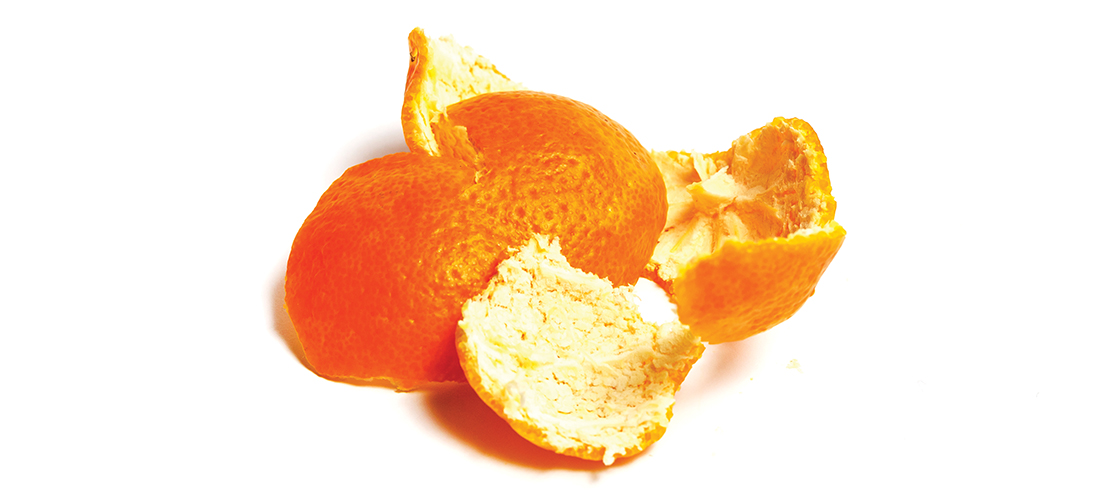Be It Ever So Humble
The onion is right at home
By Jan Leitschuh
Is there a savory recipe on the planet that doesn’t begin with “sauté an onion . . . ?” If there is, I don’t want it.
Despite their eye-watering chopped nature, onions add a depth of flavor unique to their savory selves. It’s a familiar friend in vegetable form. The aroma of onions frying in a pan just spells home cooking — unless you’re a Jain monk forswearing root vegetables, including onions.
And the humble onion is a virtual health food superstar. Surprised? Abundant in quercetin, this powerful antioxidant acts like an antihistamine and an anti-inflammatory agent. Our friends the onions are prebiotics, which make our immune-system-supporting gut biome happy. Quercetin also helps lower blood pressure in hypertensive adults. Organosulfur compounds released when we chop and dice help reduce cancer risk. What are a few tears among friends?
And the common onion is thought to exceed the heart-protective properties of red wine. So, it would seem that onions might be a useful thing to grow in the kitchen garden.
Fun fact: Plant now.
Indeed, those cute little bunching onions and scallions are easy to grow, pull, rinse and chop up. Great for adding to a morning omelet or a casserole.
But who wanted easy? I wanted big! I wanted to grow humongous sweet onion bulbs like my friend in Texas. I wanted gorgeous, flavorful flattened globes like the delicious ones from our Southern neighbors in Vidalia, Georgia.
And I was failing, year after year. Weeds, small scallion-sized bulbs, chewed tops — any number of issues.
Well, cry me a river. Time to research. I turned to a favorite source, Mr. Encyclopedia, Taylor Williams, Moore County’s horticultural guru at the North Carolina Cooperative Extension.
“You’ve got three types,” explained Williams. “You’ve got short-day, long-day and intermediate-day onions. Intermediate and short-day we can grow. Long-day — absolutely not. They won’t make a bulb.”
There’s a clue. Onion bulb production is related to the length of the day. To successfully grow bulbing onions, use short-day varieties that form bulbs with 10-12 hours of daylight. Intermediate, or day-neutral, onions form bulbs with just a little more sunshine, 12-14 hours of daylight. Both, says Williams, produce decent bulbs here.
“Imagine . . . a line between San Francisco and Washington, D.C., which separates the country into regions for the sake of onion production and day length,” explained a Cooperative Extension pamphlet. “South of the line, you will want to grow short-day or day-neutral (sometimes called intermediate) varieties of onions for large bulb production. Short-day onions need a mild winter like we have in our U.S. Hardiness Zone 7 conditions.”
So, no more buying the little brown bulbs in packets from the home improvement store, as I did way back in my Wisconsin youth. Those are long-day onions, better suited for more northerly climes, says Williams.
“The size of the onion bulb is dependent upon the number and size of the green leaves or tops at the time of bulbing,” says Dixondale Farms, a specialty onion plant grower in Texas (“We know onions!”). “The triggering of this transfer, or bulbing, is dependent upon day-length and temperature and not the size or age of the plants.”
“Get the bundles of little plants with the green tops attached, 50-75 per bunch. Texas Granex 1015Y, or Texas Supersweet, will do well here,” says Williams. “For red onions, Red Creole and Red Candy Apple will work. They just don’t get as big.”
Georgia Sweet, Sweet Red, Texas Sweet White, Texas Early Grano and Texas Grano are similar varieties mentioned as doing well throughout the South. One other caution from Williams: “Don’t buy plants that have pink roots. There is a (fungal) disease called pink root, so avoid that.”
Once the proper varieties are located, I turn my attention to soil. After years of loving attention and compost, my soils are good and pH-balanced, with proper amounts of lime. But for onions, yearly applications of further rich compost is beneficial, especially in the hot Sandhills, where organic matter burns up quickly.
“Onions have a very small root system,” says Williams. “That means all the goodies, nutrients and water, must be nearby, or below the roots. So that means organic matter.”
Sulfur is also important for onions, says Taylor, usually supplied by organic matter. Sul-Po-Mag, a common and popular Sandhills soil enricher made from a naturally occurring mineral, also gently supplies sulfur.
One mineral that may be missing for premium onion growth? Boron. The solution is simple, and quite minimal, since the margin for boron is slim — too much can be toxic to peas, lettuce and most vine crops. “Some plants are sensitive to boron,” says Williams. “Just add a pinch of 20 Mule Team Borax in a gallon of water in your watering can. You don’t need much. Use care, it’s very easy to overdo.”
Once the soil is ready, plant now. “Ideally, you’d plant on either side of March 1,” says Williams. “You want the longest opportunity for the tops to grow. Once an onion hits its daylight requirement, it will grow its bulb, and you need leaves to do that.”
Remember that the farther north you are, the more hours of daylight you have during the summer (Alaska, Land of the Midnight Sun, anyone?); the farther south, the fewer the hours of summer sunlight. So getting an early start is another key to bigger bulbs. Bulbs take about 110 days to mature, so March onions get the maximum growing light before the summer solstice in June.
And don’t worry about planting early and getting a cold snap, says Williams: “I’ve never killed an onion due to cold.”
One might think: If I plant 75 little plants, that’s a lot of onions. No worries. After the tops start growing, harvest/sacrifice a few daily, as scallions and then later green onions. The young onions are delicious in salads, omelets, as garnish, in casseroles. Bulbs grown for scallions or green onions can be planted 1-2 inches deep and 1-2 inches apart in rows that are 18-inches or more apart. Bulbs grown for traditional onions are planted the same depth, but 5-6 inches apart in rows that are 1-2 feet apart.
Strong and vigorous onion tops are vital to size and flavor, since the green leaves manufacture the sugars that plump out the bulbs. “For each leaf, there will be a ring of onion,” says Dixondale’s website. “The larger the leaf, the larger the ring will be when the carbohydrates from the leaves are transferred to the rings of the bulb.”
How do you grow leaves? “Once you’ve got two or three leaves on it, you need nitrogen,” says Williams. “Use fish emulsion, blood meal, just tank ’em up. You’re eating the vegetative part of the plant, so nitrogen is what you need.” He suggests mixing a cup of an organic nitrogen source in a watering can, “ . . . and just baptize them. Do it weekly for best growth.”
Remember those short roots? “Don’t let onions stress in water or nitrogen,” says Williams. “Just be sure to start with plenty of compost, since our soils don’t hold water or fertilizer. Add on a few inches.”
Farmers growing field crops plant their onions through black plastic, with a drip tape beneath. No drip tape? “Mulch,” says Taylor. “Onions do not suppress weeds.” If you don’t plant through some sort of barrier (including newspaper or brown butcher paper), be prepared to weed like a fiend, especially after a rain.
And those chewed tops? “Thrips,” says Williams. “It will look like speckles on your tops. Neem oil is the material of choice as soon as you start to see decent-sized leaves. Starting early to mid-April, hit them several times a month. That ought to keep them off.”
Sometime in mid-to-late June, the onion tops will begin flopping down. Now is the time to pull and dry your onions for storage. “Just take care not to bruise the necks, as that damage will shorten your storage life,” says Williams.
Oh, and those burning tears we get from chopping onions? There is a solution. It’s all about chemistry. Onions contain aromatic chemicals called sulfoxides. Cut into them, damage the cell walls, and release the chemicals that convert to noxious, annoying, eye-watering gases. But peeling and sticking an onion in the freezer for 20-to-30 minutes before chopping really helps, by slowing down the chemical conversion. Others swear by holding a piece of bread in the mouth, but I suspect the spongy texture just blocks the gasses from the eyes.
Armed with new wisdom, this year will be my year for onions. Cue the (happy) tears of a clown. PS
Jan Leitschuh is a local gardener, avid eater of fresh produce and co-founder of the Sandhills Farm to Table Cooperative.











